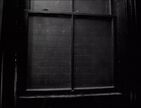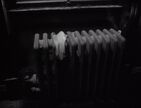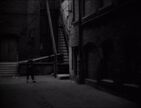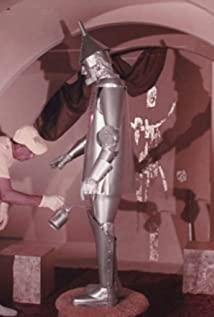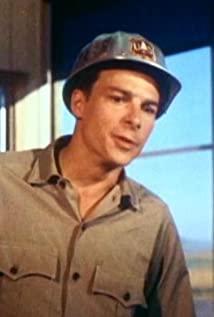When the "Rubber Head" Collector’s DVD was released in 2014, David Lynch once said that despite the film’s release for so many years, he still hadn’t seen anyone’s interpretation that accurately captured his filming time. Those "pictures" imagined. Because the content of the "rubber head" is really weird and strange, and it is difficult to understand, and Lynch, the author, refuses to give a standard answer, so far I haven't read a satisfactory analysis article. Of course, it is understandable that Lynch does not explain, and he should even applaud his attitude of protecting the value of art. He believes that the purpose of creating films such as "Rubber Head" is to allow the audience to interpret according to their own experience, the standard answer On the contrary, it will destroy the imagination of art. So it seems impossible to expect his old man to explain himself for a while.
But we can look for clues about the creative concept from the background of the film's birth. For example, Lynch once mentioned that the images of factories and streets in the movie came from Philadelphia, the American industrial city where he lived. Black-and-white film gives the film a taste of run-down. Combined with the economic depression background of the 1960s and 1970s in the United States, the state of those industrial cities that have been hit hard, it is not difficult to understand that the film seems so depressing.
However, the feeling of depression exuded by the movie may not only be due to the environment, but also from Lynch's own experience. As we all know, it took 5 years (1972-1977) for the film to be filmed. During this period, Lynch had to support his family while completing a series of work such as shooting, editing, props, and special effects on a very low budget. , The hardships among others may not be imagined. When the unemployed people stand blankly on the streets of the city, when the crime rate is rising and the skin and meat business is booming, it may not be a coincidence that the "rubber head" was born like a freak.
People say that there are a thousand Hamlet in the eyes of a thousand people. I think everyone who has watched this film will have their own understanding. Then today I want to talk about the "rubber head" in my heart. Many of the interpretations are not in the film. I found evidence to support my point of view, which is probably a taboo of film interpretation. But because the film itself leaves little hints to the audience, plus Lynch’s “encouragement”, I will dare to commit a crime once and talk about my understanding of the film from the perspective of “feeling”.
The first thing the audience may be struggling with is which parts of the film are real and which are dreams, but I don't want to pursue this part here (although it may be different). Because the freaks in the movie appear in most of the bedroom scenes, I think this makes the distinction between dream and reality meaningless, so I would rather assume that from the beginning, all this is a weird existence, you can understand Because this is a magical reality or simply an illusion, after all, from the perspective of psychoanalysis, illusions and dreams are produced on the same principle, and both are the results of instinct escaped repressive scrutiny. Abandon the debate between dreams and reality, you will find that you can better focus on the characters and elements in the movie by removing the burden. The following is my "illusion interpretation".
Henry is a man with sexual dysfunction. He and his girlfriend Mary live in disharmony. The tiny white worm that Henry took out of the mailbox represents the "penis" he doesn't lift. We saw Henry put the "Little Worm" in the shrine beside the bed, took it out before going to bed, and finally put it away with a little disappointment. And the night when Mary was so noisy to fall asleep by the howling freak, it can be inferred that the freak represented human desire (self) and the desire for sex in Mary’s heart. This is why Henry didn’t seem to hear it. The cause of the howling of the freak. Unable to bear the state of not having a sexless life, Mary finally walked out and ended the relationship. Two plots are impressive. One is when Mary leaves the room, she kneels in front of the bed and drags her suitcase. It can be seen as the last time Mary desperately flies a plane for Henry, hoping to see it. Some "effects", of course, still did not materialize her wish.
The second is the plot of Mary in sleep, grinding her teeth and rubbing her eyes on the bed. The rubbing posture reminds me of female masturbation. In addition, Mary once said: "I can't stand it. All I need is a decent night's sleep." This sentence literally means that I can't stand it. I just want to sleep well for a night, but we can completely decent sleep. "Misunderstanding" means "qualified sex".
So with this assumption, we look back at the clip of Henry's visit to Mary's family. Some parts of this clip are very interesting. Mary's mother asked Henry "what did you do". On the surface, it was asking what Henry did before the holidays, but this sentence can also be understood as "what did you do", which alludes to the sexual relationship between Mary and Henry At this time, Mary’s weird behavior appeared. She kept scratching her knees with her hands twitching. The first thing that reminded me of this scene was the exaggerated picture of Mary masturbating. At the same time, Henry said "I am a printer", Mary suddenly returned to normal and said "Henry is very clever in printing" (Henry is very clever in printing). Please pay attention to the word print. In American slang, print means sex. Combined with the non-existent tone I set for Henry before, it seems that the anxious Mary is helping Henry cover it up?
Those who have watched the movie may feel Henry's desire for the woman who lives next door. Judging from the plot of this woman and an unidentified old man coming home together, I think the woman is probably a prostitute. The sores on the freak also resemble the symptoms of venereal diseases, so I guess that Henry's desire for female neighbors may be hindered by the fear of venereal diseases. There is also a possibility that Henry was infected because of an infection with his female neighbor. Venereal disease. The setting of prostitutes is also in line with the social portrayal of the United States during the economic depression in the 1970s.
Since it is Lynch's movie, it is inevitable to make a fuss about Freud's psychoanalysis. Following this line of thought, I guess that the planet that first appeared in the film represented Henry's body, and the man with blemishes who lived in the dilapidated house on the planet represented Henry's ego, for two reasons. First of all, he manipulates the instrument, which is in line with the definition of self in psychoanalysis: the self carefully serves the requirements of the id and the superego, and regulates the contradictions they produce; secondly, this man is riddled with holes, which is very similar to the self. A state of constant oppression. Finally, Henry destroyed it under the ridicule of the freak (the id), causing his body to rupture. Instead, after eliminating the ego and the id, he embraced the woman on the stage. Who is the woman on this stage? I personally feel that she represents death, because she sang "In heaven, everything's fine." Her appearances on several occasions also represented Henry's desire to destroy himself. Or simply she represents a female egg...
Having said that, I feel that I can't make it up (supporting the wall). Finally, let me mention one more point. Eraserhead means "exhausted person" in slang. Maybe this movie is basically about a man struggling in work and life (especially his sex life) in an economic depression environment.
90/100
View more about Eraserhead reviews




